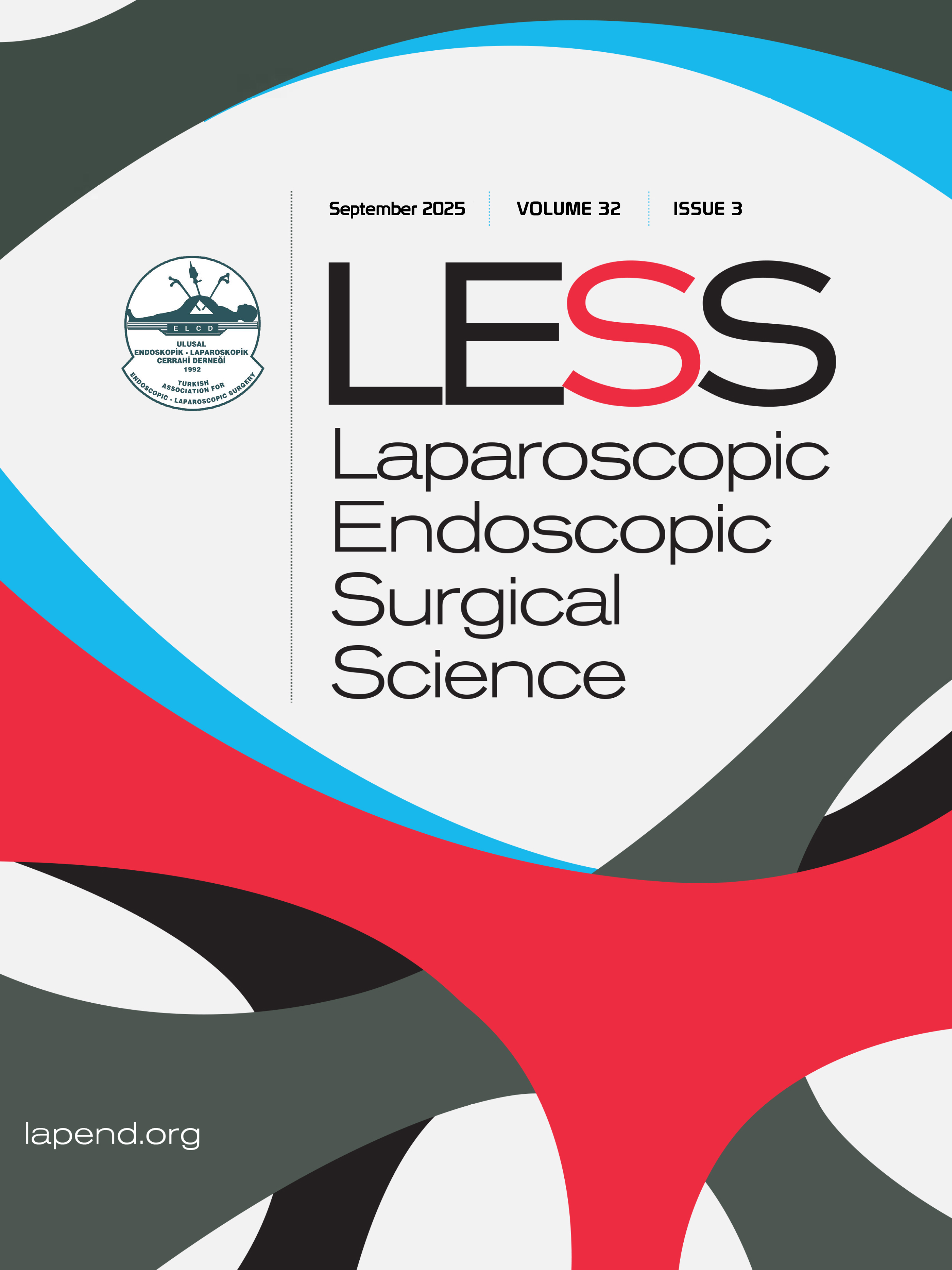The importance of the structure of pylorus in the success of the gastric botulinum toxin injections
Murat Kanlıöz1, Uğur Ekici2, Faik Tatlı3, Turgay Karataş41Çankaya University, Ankara, Turkey2Department of General Surgery, İstanbul Gelişim University, İstanbul, Turkey
3Department of General Surgery, Harran University Faculty of Medicine, Şanlıurfa, Turkey
4Department of Anatomy, İnönü University Faculty of Medicine, Malatya, Turkey
INTRODUCTION: In clinical practices, our success rate proved lower in patients with hypotonic pylorus who underwent gastric botulinum toxin A (GBTA) injection. To analyze this methodologically, we researched how considering the pyloric structure contributes to the treatment success in GBTA injection.
METHODS: This study included 196 patients who underwent GBTA injection between 2017 and 2018. We measured their body mass indexes (BMI) before treatment (BT) and six months after treatment (AT). Upon no contraindications in the endoscopy, we applied GBTA 200 U to the patients. During the endoscopy, we named the pylori able to strain & relax spontaneously or by a stimulus and close firmly as normotonic pylorus (NP) and patients unable to close firmly and respond to the stimulus as hypotonic pylorus (HP). The patients were analyzed under three groups: G1, G2 and G3, which included patients with NP, HP and NP (+) HP, respectively. In independent group comparisons, we used the Mann-Whitney U test. Further, we made the dependent group comparisons using the Wilcoxon paired sample test. In all tests, a level of 0.05 was considered significant.
RESULTS: Of the patients, 63.8% (125) were female and 36.2% (71) were male. Their mean age was 32.27±9.2 years. 148 and 48 of the patients had NP and HP, respectively. The median BMIs of groups were as follows: 35.5 (27.448) kg/m2 BT and 32.55 (2444.1) kg/m2 AT in G3 with -2.95 kg/m2 variation (p=0.048*), 35.7 (27.448) kg/m2 BT and 32.35 (2442.8) kg/m2 AT in G1 with -3.35 kg/m2 variation (p=0.036*), 35.1 (2946.2) kg/m2 BT and 34.15 (27.944.1) kg/m2 AT in G2 with -0.95 kg/m2 variation (p=0.098).
DISCUSSION AND CONCLUSION: We recommend administering GBTA injection therapy especially to the patients with NP.
Keywords: Bariatric endoscopy, botulinum toxin; obesity; pyloric structure
Gastrik botilinum toksin A uygulamalarındaki başarıda pilor yapısının önemi
Murat Kanlıöz1, Uğur Ekici2, Faik Tatlı3, Turgay Karataş41Çankaya Üniversitesi, Ankara, Türkiye2Istanbul Gelişim Üniversitesi, Genel Cerrahi Anabilim Dalı, İstanbul, Türkiye
3Harran Üniversitesi Tıp Fakültesi Genel Cerrahi Anabilim Dalı, Şanlıurfa, Türkiye
4Inönü Üniversitesi Tıp Fakültesi Anatomi Anabilim Dalı, Malatya, Türkiye
GİRİŞ ve AMAÇ: Klinik gözlemlerimize göre gastrik botilinum toksin A (GBTA) tedavisi uyguladığımız hastalardan hipotonik pilorlu hastalarda başarı oranlarımızın düşüktü. Gözlemlerimizi metodolojik temelde analiz etmek için GBTA uygulamasında pilor yapısını dikkate almanın tedavi başarısına katkısını araştırmak istedik.
YÖNTEM ve GEREÇLER: 2017-2018 yılları arasında GBTA uygulanan 196 hasta çalışmaya alındı. Hastaların tedavi öncesinde (BT) ve tedaviden altı ay sonra (AT) vücut kütle indeksleri (BMI) ölçüldü. Hastalara yapılan endoskopide kontrendikasyon yoksa aynı seansta GBTA 200 U uygulandı. Endoskopi esnasında pilor spontan veya endoskopla yapılan uyaranla kasılıp gevşeyebiliyorsa ve tam kapanıyorsa normotonik pilor (NP), tam kapanmıyorsa, uyarana da yanıt vermiyor ve açık kalıyorsa hipotonik pilor (HP) olarak adlandırıldı. Hastalar G1, G2 ve G3 adı altında üç grupta incelendi. G1de NP, G2de HP, G3de NP(+)HP hastaları vardı.Bağımsız grup karşılaştırmalarında Mann-Whitney U testi kullanılmıştır. Bağımlı grup karşılaştırmalarında ise Wilcoxon eşleştirilmiş iki örneklem testi uygulanmıştır.Tüm testlerde anlamlılık düzeyi 0,05 olarak kabul edilmiştir.
BULGULAR: Çalışmaya katılanların %63,8i (125) kadın, %36,2si (71) erkekti. Yaş ortalaması 32,27±9,2 yıl. Hastalardan 148i NP, 48i HPdu. G3de BT median BMI 35,5 (27,4-48) kg/m2, AT 32,55 (24-44,1) kg/m2, değişim -2,95 kg/m2 (p=0,048). G1de BT median BMI 35,7 (27,4-48) kg/m2, AT 32,35 (24-42,8) kg/m2, değişim -3,35 kg/m2 (p=0,036). G2de BT median BMI 35,1 (29-46,2) kg/m2, AT 34,15 (27,9-44,1) kg/m2, değişim -0,95 kg/m2 (p=0,098).
TARTIŞMA ve SONUÇ: GBTA tedavisinin özellikle NP hastalara uygulanmasını önermekteyiz.
Anahtar Kelimeler: Bariatrik endoskopi, botilinum toksin; obezite; pilor yapısı
Manuscript Language: English















